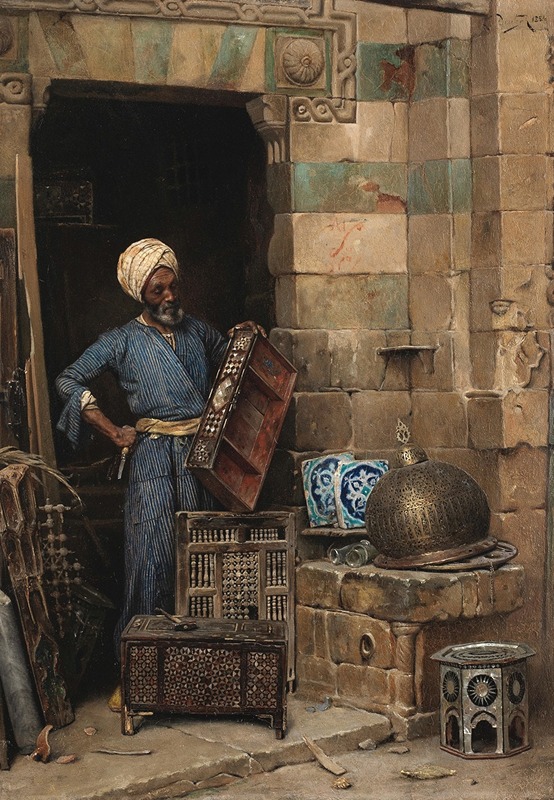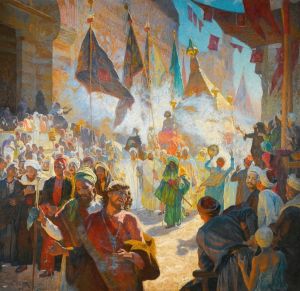
The Woodworker
A hand-painted replica of Ludwig Deutsch’s masterpiece The Woodworker, meticulously crafted by professional artists to capture the true essence of the original. Each piece is created with museum-quality canvas and rare mineral pigments, carefully painted by experienced artists with delicate brushstrokes and rich, layered colors to perfectly recreate the texture of the original artwork. Unlike machine-printed reproductions, this hand-painted version brings the painting to life, infused with the artist’s emotions and skill in every stroke. Whether for personal collection or home decoration, it instantly elevates the artistic atmosphere of any space.
Ludwig Deutsch was an Austrian painter known for his detailed and vibrant Orientalist works. Born in Vienna in 1855, Deutsch studied at the Academy of Fine Arts in Vienna before moving to Paris, where he spent much of his career. His works are celebrated for their meticulous attention to detail and vibrant depiction of scenes from the Middle East and North Africa, reflecting the Orientalist fascination of the 19th century.
"The Woodworker" is one of Deutsch's notable paintings, capturing the essence of his style and thematic interests. Although specific details about the creation date or the current location of "The Woodworker" are not widely documented, the painting is consistent with Deutsch's body of work, which often portrayed everyday life in the regions he depicted, with a focus on craftsmanship and traditional practices.
Deutsch's paintings are characterized by their photographic realism, achieved through a combination of precise brushwork and a keen eye for detail. In "The Woodworker," this realism is evident in the intricate depiction of the woodworker's tools and the textures of the materials. The painting likely portrays a craftsman deeply engrossed in his work, surrounded by the tools of his trade, which are rendered with exceptional clarity and precision.
The setting of "The Woodworker" is typical of Deutsch's Orientalist scenes, often featuring richly decorated interiors or bustling marketplaces. These settings provided a backdrop that allowed Deutsch to explore the interplay of light and shadow, as well as the vibrant colors and patterns that characterized the architecture and textiles of the regions he depicted. The attention to detail in the surroundings serves to enhance the realism of the scene and immerse the viewer in the world of the painting.
Deutsch's work, including "The Woodworker," is part of the broader Orientalist movement, which was popular in Europe during the 19th century. This movement was characterized by a fascination with the cultures, landscapes, and peoples of the Middle East and North Africa, often romanticized and idealized through the lens of Western artists. While Orientalism has been critiqued for its exoticizing tendencies and its role in perpetuating stereotypes, it also reflects the historical context of its time, when European artists and audiences were captivated by the perceived exoticism of the East.
Ludwig Deutsch's paintings, including "The Woodworker," are held in various private collections and museums, though specific details about the current location of this particular painting are not readily available. His work continues to be studied and appreciated for its artistic merit and its contribution to the Orientalist genre.
In summary, "The Woodworker" by Ludwig Deutsch exemplifies the artist's skill in rendering detailed and vibrant scenes from the Middle East and North Africa. Through his meticulous technique and attention to cultural detail, Deutsch's work offers a window into the 19th-century European fascination with the Orient, while also showcasing the artist's mastery of his craft.












